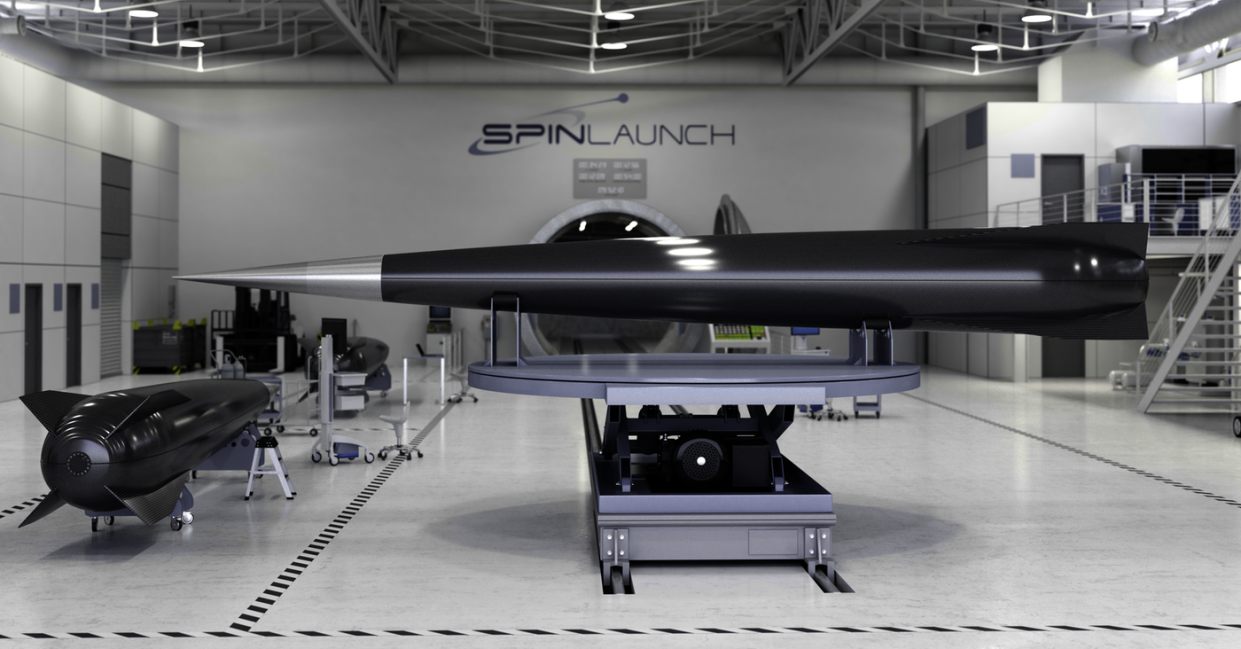SpinLaunch completes first prototype flight using kinetic launch system

SpinLaunch, a startup working on a kinetic space launch system, has successfully completed its first prototype flight. It’s a major milestone for the seven-year-old company as it works toward a test of its full-scale system.
The concept behind that system is pretty wild: Essentially, SpinLaunch wants to get to orbit by using a large, vacuum-sealed chamber and a hypersonic tether to spin a spacecraft at a high enough velocity -- up to 5,000 miles per hour -- to escape the atmosphere. That means no rocket, no rocket engines. It’s a markedly different way of thinking about spaceflight, much more akin to a giant rail gun rather than a conventional launch system.
According to SpinLaunch, such a system is now possible thanks to advances in small electronics and high-strength materials like carbon fiber, which can harden both the launch vehicle and small satellites to high-G forces.
The prototype flight took place on October 22 at Spaceport America in New Mexico. In addition to launching the test vehicle at supersonic speeds using the accelerator, which was around one-third the size of the planned system (but still larger than the Statue of Liberty, SpinLaunch notes on its website), the startup also recovered the vehicle to reuse it for later tests.
SpinLaunch, which was founded in 2014, aims to conduct around 30 suborbital test flights over the next six to eight months, CNBC reported. The startup has been backed by Airbus Ventures, Kleiner Perkins and GV.
The startup is not disclosing the site for its first orbital launch, but its website notes it will be “a coastal region of the United States.”

